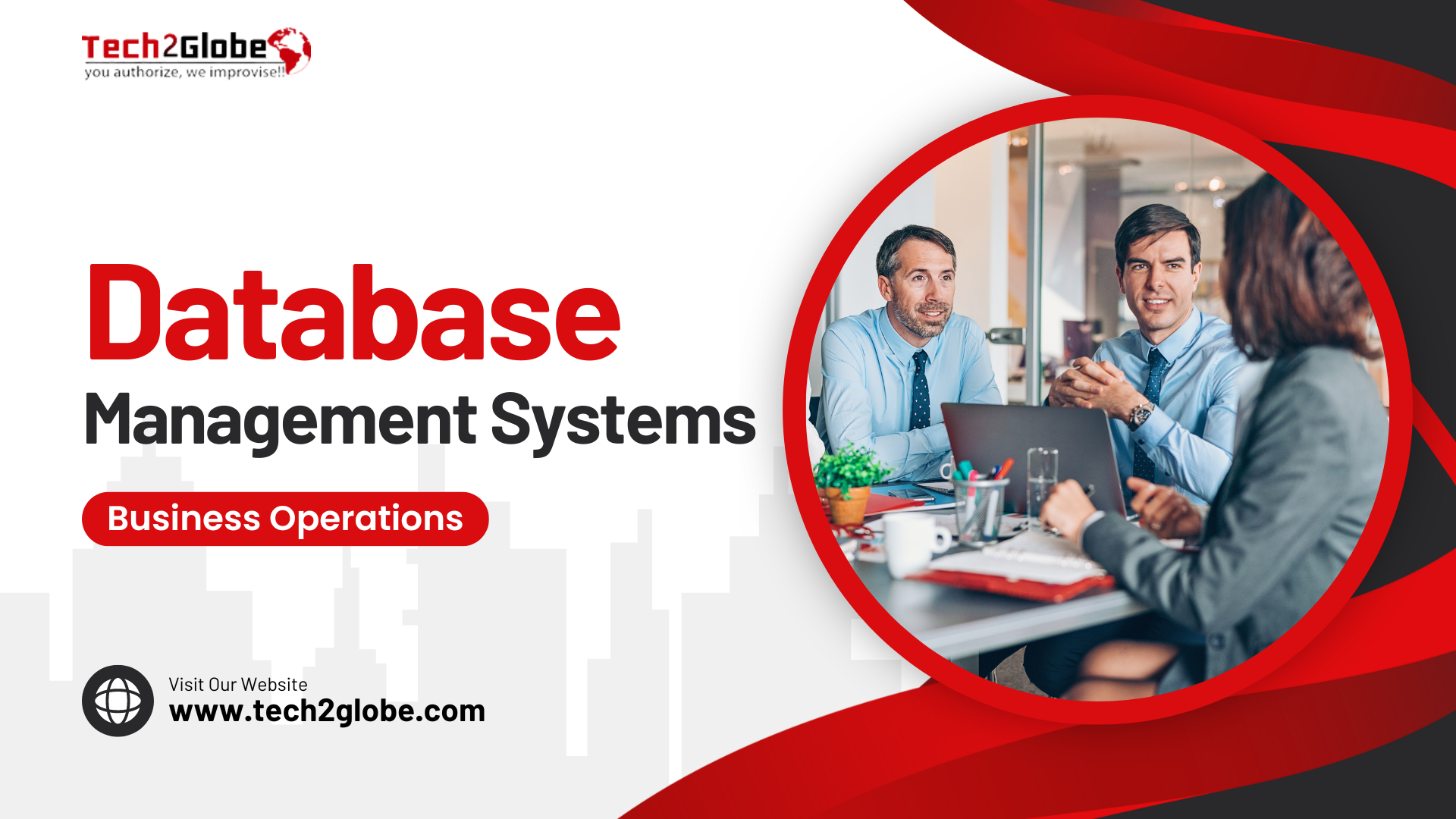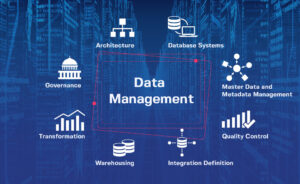Many companies are relying heavily on business intelligence (BI) these days. Simply put, BI is a software that guides businesses to make intelligent decisions and keep up with the competition. That’s where a database management system (DBMS) comes into play. Think of it as the backbone – it stores, organizes, and studies large amounts of data, helping companies better understand and use their information.
Database management systems are software systems or a collection of programs that enable users to create and maintain the database. A database system consists of a database and contains the metadata. The metadata information is stored in the DBMS catalog, which is used by the DBMS software and the database users who want to know the database structure.
Often, the most excellent way to ensure that something gets done is by making a plan. With Tech2Globe’s database management solutions, you can upgrade your business’s operational efficiency, as our objective is to improve business operations by applying proven strategies to deliver positive results.
Understanding Business Operations
Optimizing the Business Operations objective eliminates any processes that don’t help you achieve a goal. When used correctly, the framework will improve everything from scheduling to inventory and, most importantly, customer satisfaction.
Tech2Globe follows the steps below in operations optimization:
- Finding the problem that might be affecting current processes.
- Figuring out which of your existing assets can help solve the problem.
- Using the suggested changes to the issue.
- Observing and studying the results of the changes that were implemented.
Use of Digital Data Management Systems to Streamline Work Process
Big industries require routine maintenance of larger plants, audits, and data analysis of different equipment. However, most of this research is terrible at gathering and retaining “dirty data,” which includes incorrect data, duplicates, incomplete data, or misspellings. Do you know that over 40% of maintenance errors are caused by insufficient documentation? Yes, you read that right, and this leads to severe consequences for expenditures and potential accidents. Digital Database Management Systems, which integrate reliable, efficient, and consistent data from consistent data systems, were developed to address this issue.
DBMS Can Do a Lot For Business Intelligence (BI)
1) Data Warehousing: Centralizes all types of data in one place, making it easier to manage and analyze.
2) Data Search: You can tell the DBMS to quickly search for specific data using certain rules or criteria.
3) Understanding Data: Helps do various things with data, such as sorting, grouping, even looking for patterns or things of interest in it.
Best Practices for Optimizing Database Performance
Each of the following techniques can be used to optimize database management.
- Partitioning—Splitting a single database table into sections stored in multiple files.
- Raw partition versus file system—Storing database data in an OS-controlled file.
- Indexing—Choosing the proper indexes and options to enable efficient queries.
- Denormalization—Varying from the logical design to achieve better query performance.
- Clustering—Enforcing the physical sequence of data on the disk.
- Interleaving data—Integrating data from multiple tables into a sequenced file.
- Free space—Leaving room for data growth.
- Compression—algorithmically reducing storage requirements.
- File placement and allocation—Putting the correct files in the right place.
- Page size—Using the proper page size (or block size) for efficient data storage and I/O.
- Reorganization—Removing inefficiencies from the database by realigning and restructuring database objects.
Increase Enterprise Business Intelligence User Adoption
1. Establish a well-defined business use case
Develop a convincing use case highlighting the benefits of your BI solution. Illustrate how the tool helps various business units achieve goals faster and replace existing technologies and processes.
When every individual understands the tool’s purpose, BI adoption rates will begin to improve. This exercise will also help you select appropriate BI features as you can identify needs and priorities directly from your team members—who all have helpful input to offer during the implementation process.
2. Maintain your data quality in check
Businesses often need to pay more attention to data quality when executing a BI solution. Business intelligence software can only produce insightful results based on high-quality data. Users quickly turn their back on the new tool if they find a data issue.
Ensuring data quality right from the beginning will encourage users to consider your BI tool a valid and reliable data source and reduce their dependencies on disjointed reports or spreadsheets. Having a cohesive data warehouse with a process around it to obtain new data will help to enhance data quality and decrease the margin for error.
3. Select the right BI platform.
Take your time and conduct a thorough assessment when selecting a BI solution. While everyone in your organization may be interested in using a reporting tool, data needs will vary from business unit to business unit. An ideal enterprise business intelligence platform should be flexible. It brings easy-to-understand data into the tools that team members are already using. BI solutions with embedded analytics support make this possible.
Have you ever examined your processes?
Here are five reasons why you should focus on operations optimization.
- Quality Results:
The quality of work improves as processes are adjusted. It helps you avoid costly mistakes and deliver the best outcomes for your clients. Also, consistency is essential for workplace optimization, and the way to achieve it is by developing a specified set of process management solutions.
- Efficiency:
Efficiency is the natural outcome of an optimized process, as part of the process is to eliminate inefficiencies where they’re spotted and find ways to be more productive in the long run. An adequate system can keep track of resources and monitor ROI.
- Assures Compliance:
Industry regulations and state/federal laws are constantly changing—and not complying with them can have disastrous implications for your business.
- Employee Performance:
Instituting automated and optimized processes can ensure that monitoring is easier and faster for upper management to obtain. The improved monitoring capability can also keep upper management informed so they can make decisions at the moment—when it counts.
- Accurate Information
Updated processes lead to updated information. With a clear-cut flow between departments, communication improves, resulting in employees with enough information to do their jobs well.
Tech2Globe provides a personalized operations optimization project plan that includes an executive summary of schedules and deadlines.
Conclusion Improving BI functionality in DBMS is essential for businesses, and Tech2Globe is here to help. We specialize in data management system optimization to help organizations compete. Our program uses best practices to help organizations realize the full potential of their data. Companies use our data-driven help to turn unstructured data into meaningful insights, enabling them to thrive in today’s rapidly changing industry.










